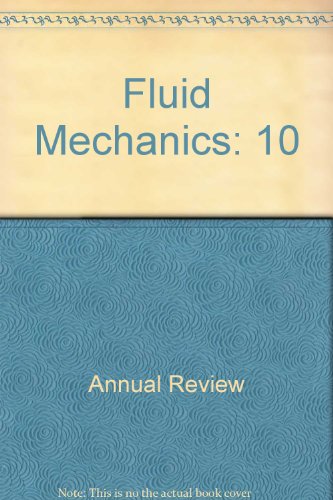跌落冲击动力学:冲击力和应力分布
IF 30.2
1区 工程技术
Q1 MECHANICS
引用次数: 42
摘要
跌落冲击的动态变量,如力、阻力、压力和应力分布,是理解各种自然和工业过程的关键。由于高速摄影和计算流体动力学,几十年来,跌落冲击运动学的研究一直在不断发展,但跌落冲击动力学的研究在过去10年才达到顶峰。在这里,我们回顾了最近通过实验、模拟和理论的协调努力,如何对跌落冲击动力学产生了新的见解。特别是,我们考虑了早期和晚期撞击状态下撞击力的时间演变,以及固体表面上压力和剪切应力分布的时空特征。我们还讨论了其他因素,包括水层的存在、空气缓冲和非球形液滴几何形状,并简要回顾了液滴形成的颗粒冲击坑,作为一个例子,证明了液滴冲击应力分布的不同后果。《流体力学年度评论》第54卷预计最终在线出版日期为2022年1月。请参阅http://www.annualreviews.org/page/journal/pubdates用于修订估算。本文章由计算机程序翻译,如有差异,请以英文原文为准。
Drop Impact Dynamics: Impact Force and Stress Distributions
Dynamic variables of drop impact such as force, drag, pressure, and stress distributions are key to understanding a wide range of natural and industrial processes. While the study of drop impact kinematics has been in constant progress for decades thanks to high-speed photography and computational fluid dynamics, research on drop impact dynamics has only peaked in the last 10 years. Here, we review how recent coordinated efforts of experiments, simulations, and theories have led to new insights on drop impact dynamics. Particularly, we consider the temporal evolution of the impact force in the early- and late-impact regimes, as well as spatiotemporal features of the pressure and shear-stress distributions on solid surfaces. We also discuss other factors, including the presence of water layers, air cushioning, and nonspherical drop geometry, and briefly review granular impact cratering by liquid drops as an example demonstrating the distinct consequences of the stress distributions of drop impact. Expected final online publication date for the Annual Review of Fluid Mechanics, Volume 54 is January 2022. Please see http://www.annualreviews.org/page/journal/pubdates for revised estimates.
求助全文
通过发布文献求助,成功后即可免费获取论文全文。
去求助
来源期刊
CiteScore
54.00
自引率
0.40%
发文量
43
期刊介绍:
The Annual Review of Fluid Mechanics is a longstanding publication dating back to 1969 that explores noteworthy advancements in the field of fluid mechanics. Its comprehensive coverage includes various topics such as the historical and foundational aspects of fluid mechanics, non-newtonian fluids and rheology, both incompressible and compressible fluids, plasma flow, flow stability, multi-phase flows, heat and species transport, fluid flow control, combustion, turbulence, shock waves, and explosions.
Recently, an important development has occurred for this journal. It has transitioned from a gated access model to an open access platform through Annual Reviews' innovative Subscribe to Open program. Consequently, all articles published in the current volume are now freely accessible to the public under a Creative Commons Attribution (CC BY) license.
This new approach not only ensures broader dissemination of research in fluid mechanics but also fosters a more inclusive and collaborative scientific community.

 求助内容:
求助内容: 应助结果提醒方式:
应助结果提醒方式:


